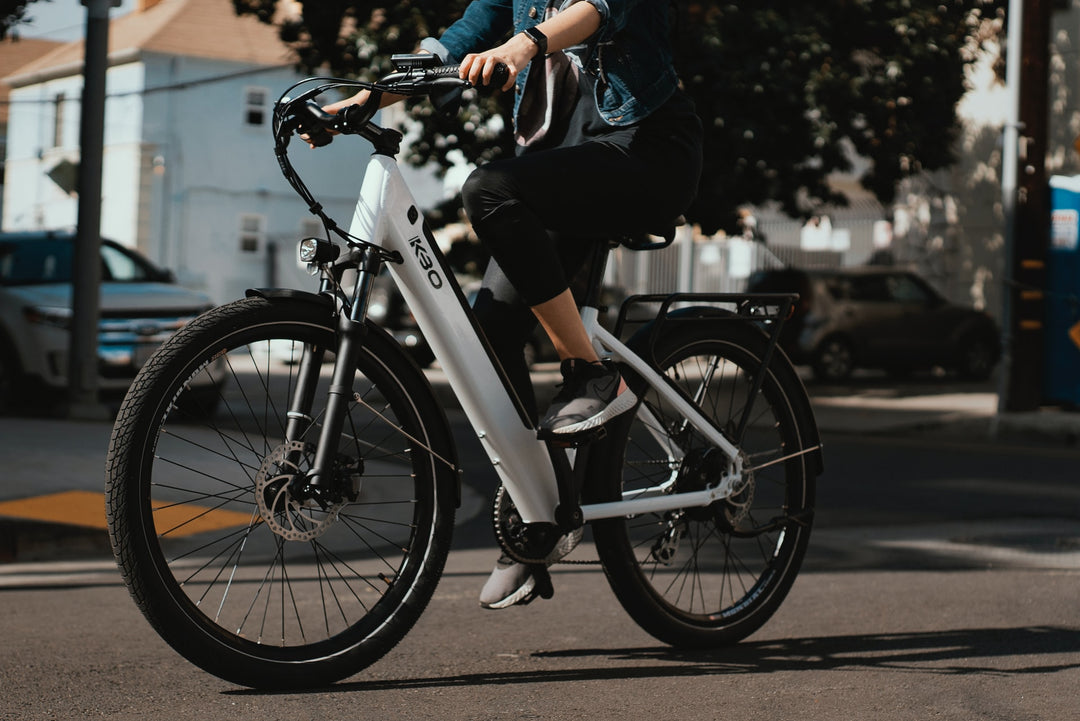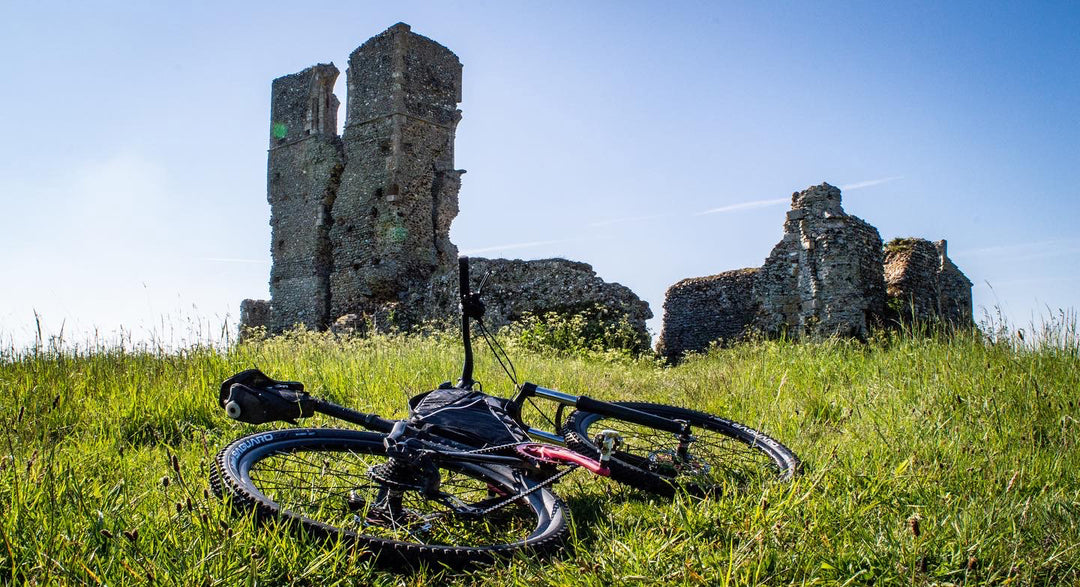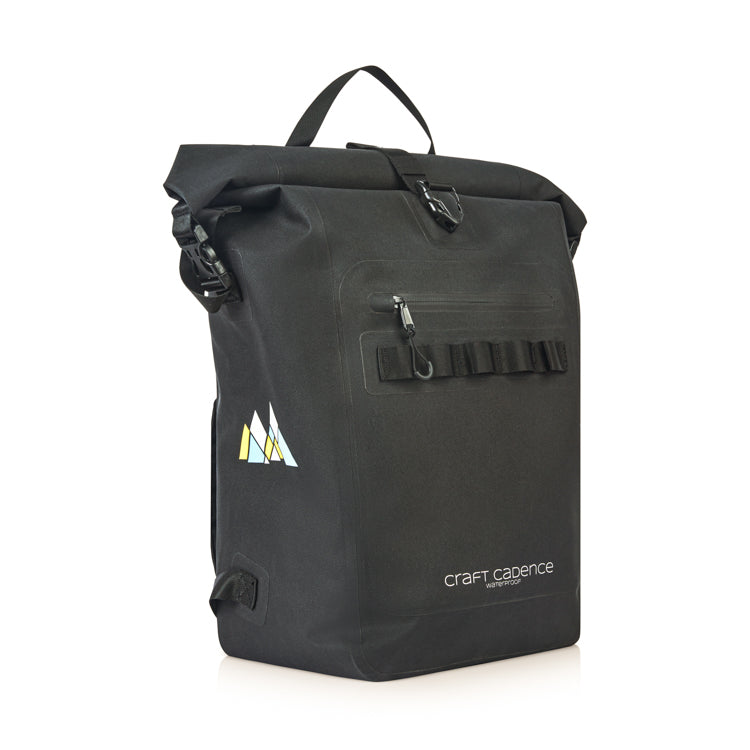The ultimate guide to helmet cameras for cyclists. Why do some commuters use these and should you get one?
You’ve probably seen them as you are cycling around the city. Little cameras mounted on top of a fellow cyclists helmet. Well, if you are wondering what the fuss is all about, and if you should get one too, use this blog for guidance.
Introducing the cycling helmet camera
If you love to explore on your bike, or want to film the goings-on while out and about, a cycling camera is probably for you. If you have one, you can document your travels on two wheels, which can come in handy if, god forbid, you have any sticky situations with cars, or you see something particularly noteworthy.
Most helmet cameras are really easy to use and attach simply to your helmet. However, there’s a lot of selection and the quality in battery life and image performance varies drastically. Additionally, while some cameras are more suitable for your handlebars, mounting on your helmet helps make the footage less shaky, although the position of the film will be from a high viewpoint.
Below, we’ll compare some of the best cameras available and highlight what to look for if you are considering a purchase.
Why get one?
As mentioned above, filming your cycling journey’s can be great for picturesque rides or in case you need to report an incident that happens on the road. Uploading and sharing your cycling exploits has become a popular pastime for cyclists - particularly on apps such as Strava or Instagram. Similar to a car dash-cam, a helmet camera will also provide the user with evidence in a situation when needed. So, whether you want a camera for those picturesque moments, or to ensure you have evidence of on-the-road wrongdoing, it’s easy to see why a helmet camera has become a popular cycling accessory.
What to look for in a camera?
These are the key things you should take into consideration when looking for a helmet camera:
- Size and weight: Ideally, you want a small and lightweight camera. If the camera is heavy and clunky, it can be an unnecessary weight on your head and prove to be a distraction. You want it to be as discreet and portable as possible.
- Video quality: As with any camera, you want to get one that has excellent, clear video and photo quality. The higher the resolution, the better the image. Most of the best-selling modern helmet cameras are 4K, which is four times sharper than HD. If you want the best performance, go for a 4K camera (although HD is still a solid and cheaper option).
- Mount variations: Although we are looking at helmet cameras, a good mount kit includes a variety of options in case you want to attach your camera elsewhere on your bike, or yourself..
- Waterproof: If it rains while out and about, you don’t want your camera to break. Most action cameras are waterproof, while others need a special case to protect them. Make sure you check this when buying your camera.
- User-friendly: It goes without saying that you don’t want to have to spend ages trying to work out how to use the camera. Opt for a camera that is simple and easy to use, and has wireless connectivity that allows you to use your phone as a remote control.
- Display: The screen on your camera provides you with the option to look at your recordings or images. Not all cameras have this function, but typically the screen will be around two inches in size, and some of the more modern action cameras have a touchscreen display.Camera’s without a screen simply mean you won’t see the footage until after you’ve filmed it and uploaded it to your computer/phone.
- Battery life: Go for a camera with a good battery life. There is nothing worse than a camera dying mid-ride. The best cameras record for a long period of time and are quick to fully charge.
- Editing software: Some cycling cameras have their own editing software and apps. This helps editing your footage on the move or quickly. For a more edited version, you’ll need to use a computer but an easy to use editing software is a helpful addition.
Here are a few helmet camera recommendations
I’ll start with the GoPro Hero5. GoPro is arguably the market-leader for action cameras and have a large and popular range. The Hero5 is a small camera, small enough to sit on the palm of your hand, and weighs just 117g. It’s still packed with features, though. It’s fully waterproof, shoots in stabilised 4K quality, and can shoot straight out of the box. It also mounts to a large range of options so you can attach it to your helmet, your handlebars or your chest. Check out Crosstour’s range for a cheaper GoPro alternative.
Second up is the Garmin Virb Ultra 30, the latest in Garmin’s camera range. Garmin is another big player on the market (more dominant in the cycling computer market) and have revamped the Garmin Virb with the more GoPro-like Ultra 30. However, unlike the GoPro, the Virb includes a built-in GPS tracker so you can include cycling metrics on your videos (such as speed or location). The Garmin Virb Ultra 30 is also compatible with GoPro mounts, shoots in 4K quality, and shoots hands-free with voice activation.
Lastly it is the Sony AZ1. This video camera has an impressive five shooting modes, comes with the premium ZEISS S lens, and shoots in 170 degrees. It also includes SteadyShot, an advanced image stabilisation technology - particularly handy for cycling. It’s part-waterproof (not for heavy rain) and has a remote control for live-viewing your footage.



